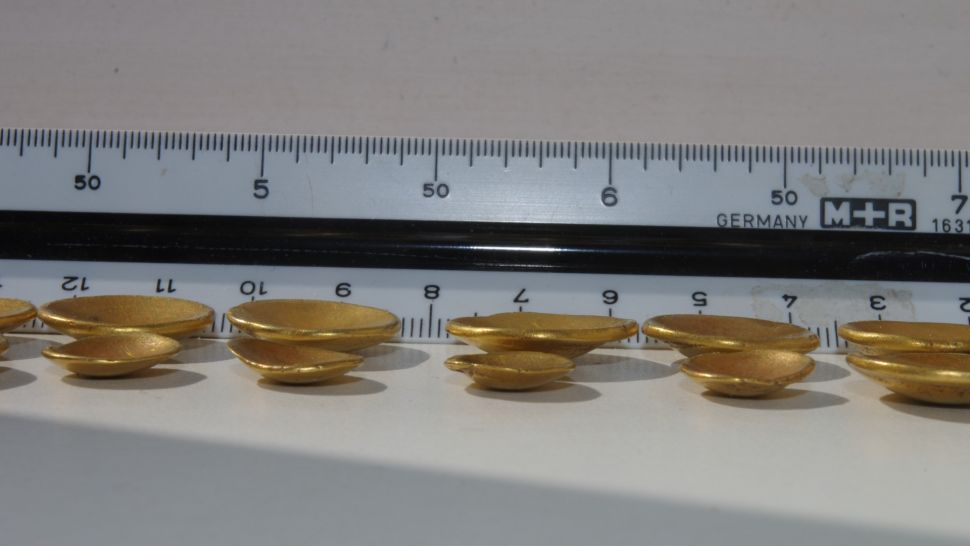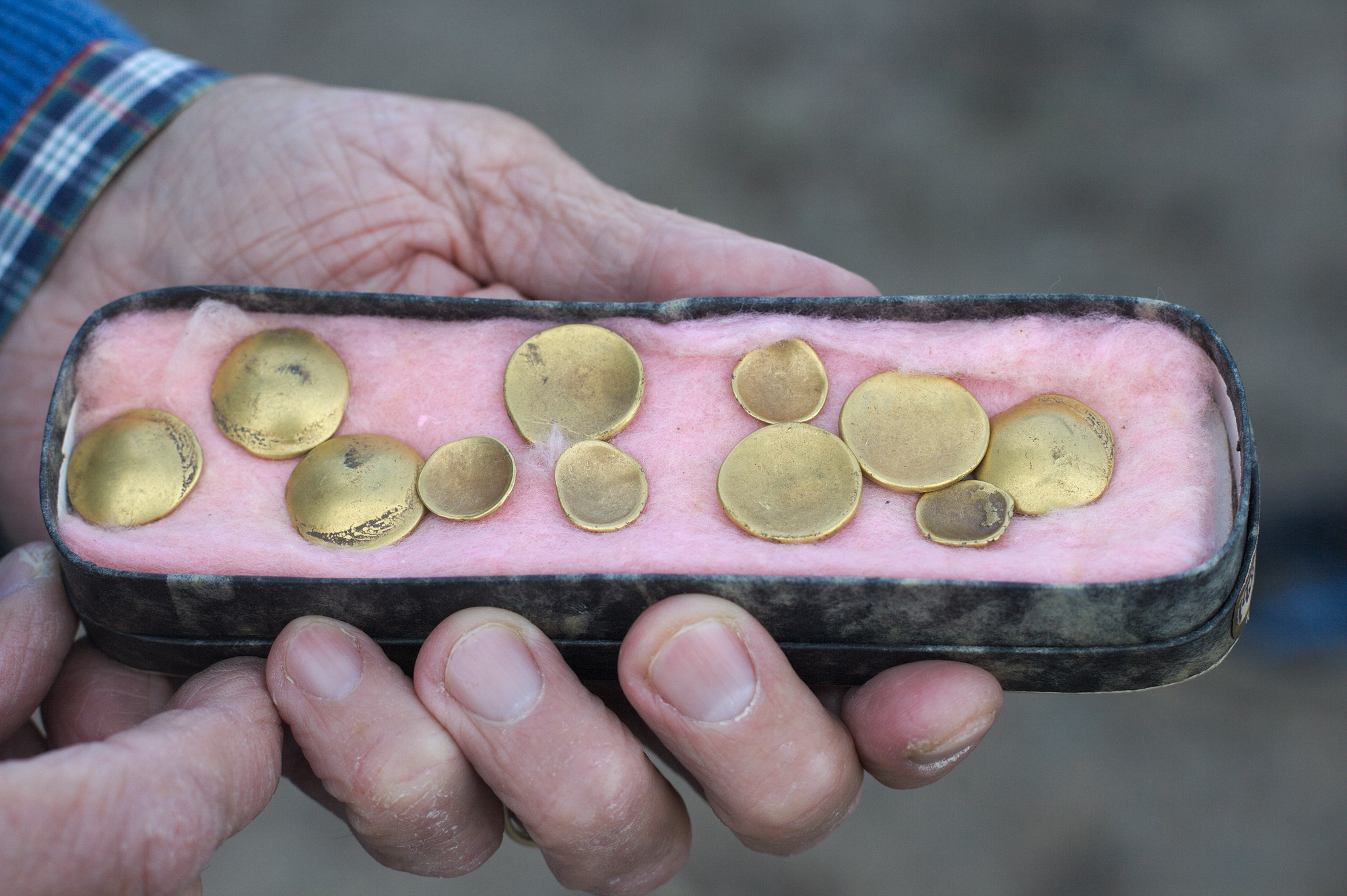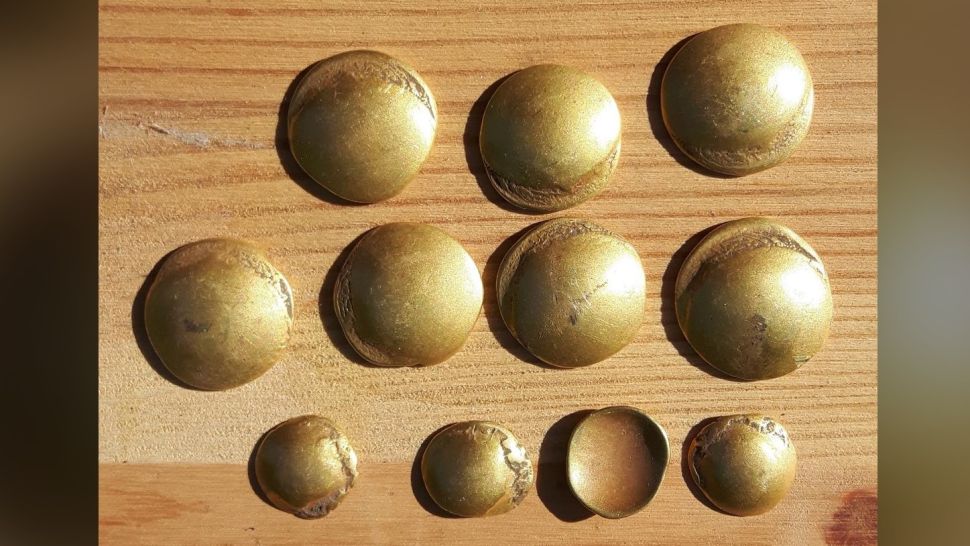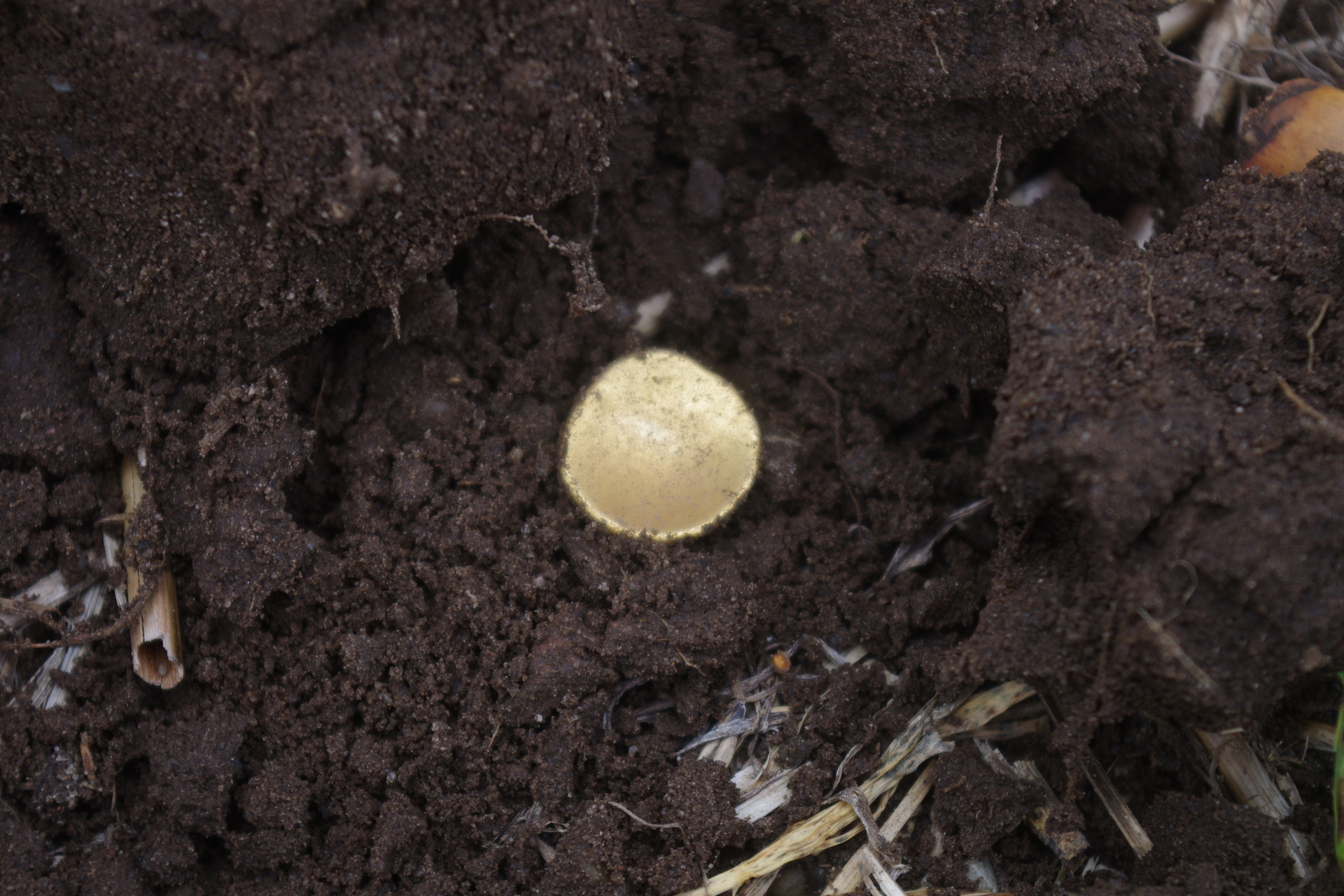Perfektní zlatá nálož, když byla podle archeologů hodnota nesmírná tak jak velkou hodnotu mohl mít třeba poklad ze stradonic..... Nebo nedejbože podmokelsky poklad 
Detectorist finds 2,000-year-old hoard of gold Celtic irises
Categories: Minting - Numismatics , Treasures , Nálezy nejenom s detektorem v západní Evropě
The detector find by an amateur archaeologist is the first Celtic gold treasure discovered in Brandenburg and the second largest found in Germany. According to experts, "the value of the ancient treasure must have been immense", archaeologists are talking about the find of a lifetime.
The treasure was discovered with his metal detector by Wolfgang Herkt, a volunteer amateur archaeologist at the Brandenburg State Heritage Institute and State Archaeological Museum (BLDAM). In 2017 he was near the village of Baitz, having previously obtained permission from the landowner to search the local fields. One day, he noticed something shiny. "It reminded him of the cap from a small liquor bottle," Pilekic said. "But it was a Celtic gold coin."
He immediately found ten more coins. At that point, Mr. Herkt reported his find to BLDAM, whose archaeologists arrived at the site and subsequently discovered a total of 41 gold staters. "This is an extraordinary find that you probably only make once in a lifetime," Mr. Herkt said in a statement to Livescience. "It feels good to be able to contribute to research on our country's history with a find like this."
The coins are typically "pure" bowl-shaped coins with no depictions. The 19 coins in the set represent tripods with a diameter of 20 mm and an average weight of 7.3 grams. The 22 coins are quarter tripods with a diameter of 14 mm and a weight of 1.6 grams. In Germany, these coins are called "regenbogenschüsselchen" - translated as "rainbow cups", the well-known irises to us. "They refer to the legend that a pot of gold is hidden at the end of the rainbow at the point of contact with the earth," explained Marjanko Pilekić, numismatist and research assistant at the coin department of the Friedenstein Castle of the Gotha Foundation, who analysed the coins. "Another traditional legend is the idea that irises fell directly from the sky and were considered talismans with a healing effect. It is likely that peasants sometimes found them in their fields after the rain," Pilekic said.
By comparing the weight and size of the coins with other Celtic irises, Pilekić was able to date the coins to the period 125 BC to 30 BC, "The Celts of the Late Iron Age (from about 450 BC to the Roman conquest in the first century BC)) were active in the areas of present-day England, France, Belgium, Switzerland, Austria, southern Germany and the Czech Republic," Pilekić explained, adding that irises of this type are occasionally found in southern Germany. However, the Celts did not live in Brandenburg itself, so the discovery of the coins suggests that Iron Age Europe was connected by extensive trade networks.
Since all the coins in the set are similar, the hoard was probably deposited at one time. It is a mystery, however, why the second largest hoard of irises of this type found ended up in Brandenburg. "Finding Celtic gold is exceptional, especially in this area. The find once again expands the distribution area of these types of coins and provides us with new information that we had no idea about until now," Marjanko Pilekić concluded.
Roman Němec
Sources: livescience.com, coinsweekly.com

side view of the iris bowl

the first coins were discovered by the detector

first 11 coins from the hoard discovered by metal detector

when found
The article is included in categories:
- Archive of articles > Minting - Numismatics
- Archive of articles > Treasures
- Archive of articles > Archaeology > Finds and rescue research abroad > Nálezy nejenom s detektorem v západní Evropě
Post
Paráda a sen každého hledače!!! Nádherná úroda 


podělal to, měl do toho jít se čtyřma právníkama 








